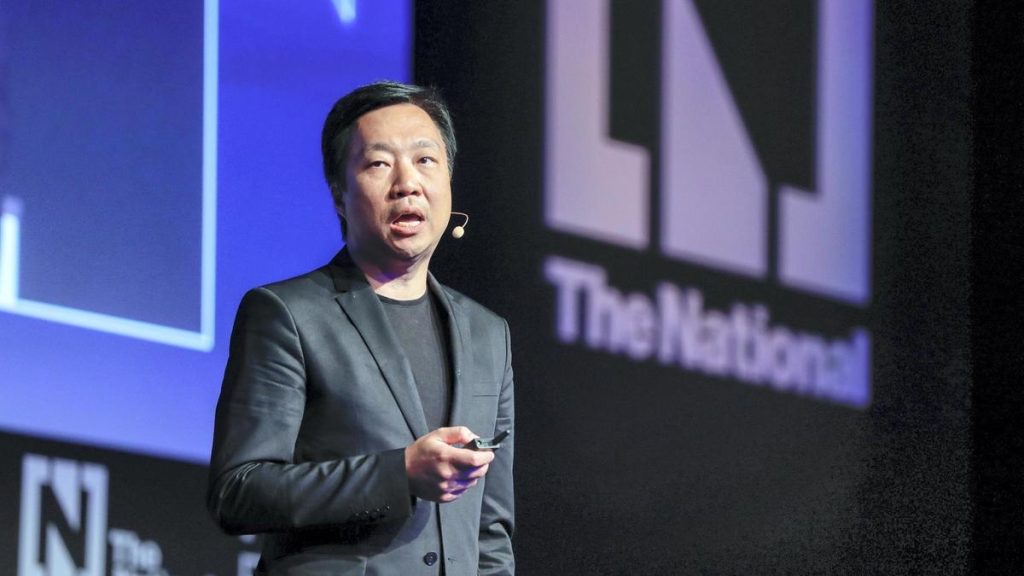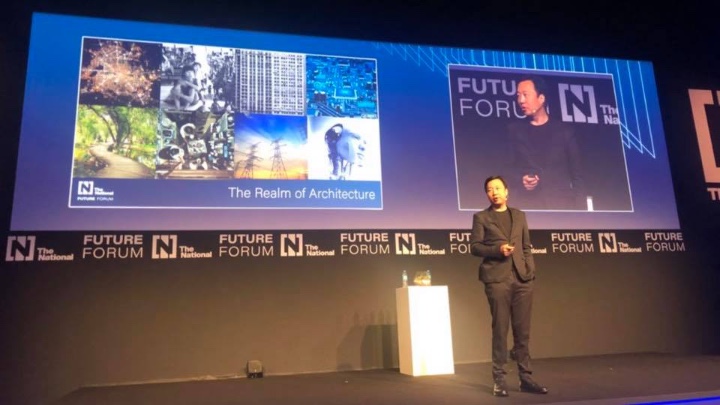The National publishes article entitled “The National Future Forum – Architecture is over – here’s Cybertecture” by futuristic architect James Law on the future of buildings and spaces:
Design is everywhere and is forming everything. Design drives evolution. Design weaves the fabric of mankind in an increasingly complex world. Design is being used to address the great challenges for achieving sustainability, alleviating poverty, affordability and delivering resilience for our world. It is playing a key role in modulating the conflicting forces of urbanisation and nature in how we can continue to design smarter cities in this age of urbanisation.
Design has had a quantum leap, driven by rapid adoption of science and technology, that has given rise to new methodologies and materials that go beyond the traditional. Computer-aided design, simulation by Virtual Reality, smart materials, nano technology, has opened up new repertoires for designers to create new typologies and solutions. Design is opening up new possibilities of how we see the world. This is the era of a new design paradigm. This is the era of “Cybertecture”, a new realm of architecture. In this future made out of design, from cities, to buildings, to transportation, to information networks,
Cybertecture brings together the once separate disciplines of architecture, engineering, information technology and science to become the single focus for a creativity that leads to big and impactful designs.
Urbanisation raises the challenge to design and redesign cities into tough cities to be more green and sustainable. This requires brave intention’s in design in the form of “mega architecture”. Imagine a city that allows its citizens to have no waste of time, have unlimited water, powered by renewable sources, and built to be resilient to global climate change. A design prototype is the Technosphere – a contemporarily designed city that does away with the conventional sprawling planned grid city approach, but instead adopts a “planetary” approach by compacting the city into a man-made planet, that is more sustainable and resilient. Such mega architecture is symbolic of a new courage in design to think big for our future.
Smart Architecture will be more akin to iPhones than just conventional and dormant concrete structures we once built. The Pad, a smart building completed in Dubai, is designed based on the same philosophy as an iPod, where the building can deliver beyond just conventional space by Feeding technological lifestyle enhancements with virtual reality spaces and even smart mirrors in bathrooms to monitor the health of the inhabitants. Eventually when enough smart buildings are built in a city, then the city becomes smarter by the sharing of information from building to building. In between these smart buildings, a new “sensory architecture” network may come about to monitor and gather big
Data in the urban environment to the convenience of the citizens. Smart lampposts, most recently deployed in Hong Kong, deliver real-time environmental and weather information at street level that are useful for protecting citizens from pollution or providing data to smart buildings for their own environmental control systems.
Connecting people, buildings and cities has always been a major underlying design challenge. New forms of transportation architecture represent brave new designs that will deliver even more convenience, connectivity and connectedness for travellers. The Hyperloop
Is a new future design that compresses distance and time by allowing for trains travelling at airplane-like speeds in vacuum tubes to link cities over vast distances, yet make them feel nearby.
Design can also influence the social fabric of our future communities. In an era of rising living costs and increasing poverty, it is essential that design focuses on creating affordable architecture to house the majority of citizens in the new age. The OPod concrete tube housing in Hong Kong is a design that utilises available low cost mass produced concrete water pipes to build micro living housing costing less than USD 15,000 per house. These can be produced in mass quantities by using industrial approach, built more quickly than conventional buildings and stacked up to provide housing for citizens.
Design is also disrupting the construction industry from one which use to slowly and inefficiently, into one that is based on a more efficient. Modular Architecture is designed to be manufactured rather than built. They can be created quickly built in through automation and standardisation. The result is a lower cost and high quality architecture. AlPod housing is a such a modular architecture created out of aluminium in managed factories. These AlPods can be stacked or plugged into conventional buildings to build faster faster and more effectively. Design is opening new futures. With the imminent arrival of Artificial Intelligence, almost every design will be able to think for itself and interact more autonomously. Imagine a new generation of autonomous architecture that allows even buildings to self-fly and navigate from place to place in order to house people based on changing conditions, disaster relief or just on the whim of the owner.
The challenges faced to better the human condition on this finite planet is the sustenance upon which newer generation of designers will feed off to conceive creative and inventive solutions. In the history of man, our progress as humanity has always been marked by great designs. This is only continue and accelerate in our fast changing world.
This is the era of design.













